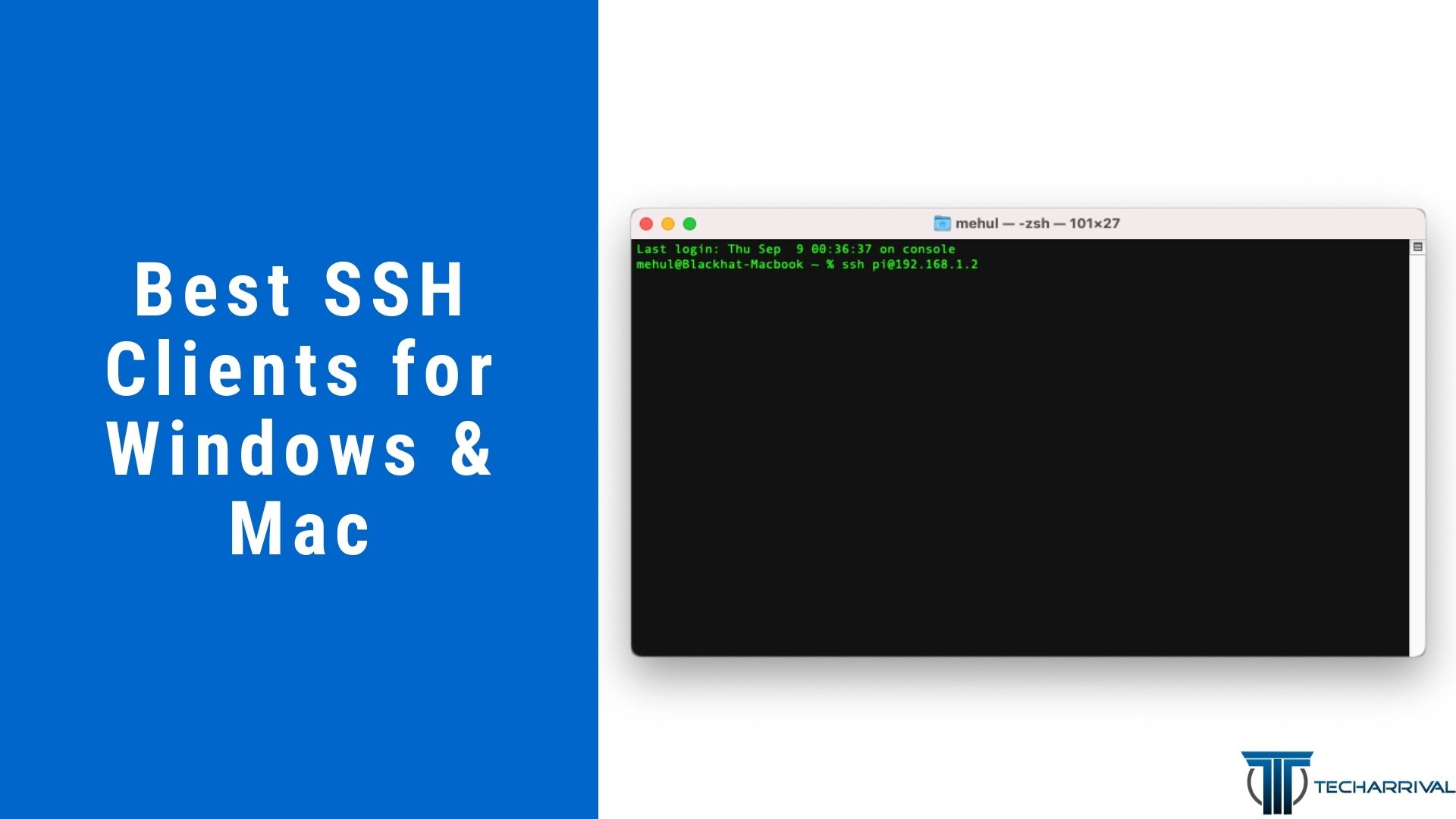In today's digital age, finding the best SSH remoteIoT solution is crucial for businesses and individuals looking to enhance their IoT systems' security and efficiency. Secure Shell (SSH) has become an essential tool for remote management, providing a secure channel for data transmission. This article will explore the best SSH remoteIoT solutions, helping you make informed decisions to meet your specific requirements.
As IoT devices continue to grow exponentially, the need for secure communication channels has never been more critical. According to recent studies, the global IoT market is projected to reach $1.5 trillion by 2030. With this growth, ensuring secure connections through SSH remoteIoT solutions is vital for protecting sensitive data and maintaining system integrity.
In this guide, we will delve into various aspects of SSH remoteIoT solutions, including their features, benefits, and implementation strategies. By the end of this article, you will have a comprehensive understanding of the best SSH remoteIoT solutions available today, empowering you to choose the right option for your needs.
Read also:Theodora Day Bio A Comprehensive Look Into The Life And Achievements
Table of Contents
- What is SSH RemoteIoT?
- Why Choose SSH for IoT?
- Top SSH RemoteIoT Solutions
- Benefits of Using SSH in IoT
- Security Considerations for SSH RemoteIoT
- Tips for Implementing SSH RemoteIoT
- Performance Optimization for SSH RemoteIoT
- Comparison of SSH RemoteIoT Solutions
- Case Studies of Successful SSH RemoteIoT Implementations
- The Future of SSH RemoteIoT
What is SSH RemoteIoT?
SSH RemoteIoT refers to the use of Secure Shell (SSH) protocols for remote management and communication with Internet of Things (IoT) devices. This technology enables secure data transfer between IoT devices and remote servers, ensuring confidentiality, integrity, and authenticity of transmitted data.
SSH is a network protocol that provides encrypted communication, allowing users to access remote systems securely. In the context of IoT, SSH RemoteIoT solutions play a crucial role in managing and monitoring devices from afar, making them indispensable for modern IoT deployments.
Key Features of SSH RemoteIoT
- Encryption: Ensures data privacy by encrypting all communication between devices.
- Authentication: Verifies the identity of users and devices to prevent unauthorized access.
- Command Execution: Allows remote execution of commands on IoT devices, streamlining management tasks.
- File Transfer: Facilitates secure file transfer between devices using protocols like SFTP.
Why Choose SSH for IoT?
Choosing SSH for IoT applications offers several advantages, including enhanced security, ease of use, and compatibility with a wide range of devices. Below are some reasons why SSH is the preferred choice for IoT remote management:
Security Benefits
SSH provides robust security features that protect IoT devices from cyber threats. By encrypting data and authenticating users, SSH ensures that sensitive information remains secure during transmission.
Compatibility
SSH is compatible with various operating systems and devices, making it an ideal choice for diverse IoT ecosystems. Whether you're managing sensors, cameras, or industrial equipment, SSH can handle the task effectively.
Top SSH RemoteIoT Solutions
Several SSH RemoteIoT solutions are available in the market, each offering unique features and capabilities. Below are some of the best options:
Read also:Unlock The Perks Of Marriott Silver Benefits Your Ultimate Guide
OpenSSH
OpenSSH is an open-source SSH implementation widely used for remote management of IoT devices. It supports encryption, authentication, and file transfer, making it a versatile solution for IoT applications.
Bitvise SSH Client
Bitvise SSH Client is a powerful tool for managing IoT devices remotely. It offers advanced features like SFTP, terminal emulation, and authentication mechanisms, ensuring secure and efficient communication.
Putty
Putty is a popular SSH client known for its simplicity and ease of use. It supports basic SSH functionalities and is ideal for users looking for a lightweight solution for IoT management.
Benefits of Using SSH in IoT
Implementing SSH in IoT systems brings numerous benefits, enhancing both security and operational efficiency. Below are some key advantages:
Enhanced Security
SSH provides robust encryption and authentication mechanisms, safeguarding IoT devices from cyberattacks and unauthorized access.
Improved Efficiency
With SSH, users can remotely manage and monitor IoT devices, reducing the need for physical intervention and saving time and resources.
Security Considerations for SSH RemoteIoT
While SSH offers strong security features, it's essential to implement best practices to maximize protection. Below are some security considerations for SSH RemoteIoT:
Use Strong Passwords
Ensure that all SSH accounts have strong, complex passwords to prevent brute-force attacks. Consider implementing multi-factor authentication for added security.
Regular Updates
Keep your SSH software and IoT devices up to date with the latest security patches and updates to address vulnerabilities.
Tips for Implementing SSH RemoteIoT
Successfully implementing SSH RemoteIoT requires careful planning and execution. Below are some tips to help you get started:
Plan Your Deployment
Before deploying SSH RemoteIoT, assess your requirements and choose the right solution based on your needs. Consider factors like device compatibility, scalability, and budget.
Train Your Team
Ensure that your team is well-trained in using SSH tools and protocols. This will help them manage IoT devices effectively and troubleshoot issues efficiently.
Performance Optimization for SSH RemoteIoT
To ensure optimal performance of your SSH RemoteIoT system, follow these best practices:
Monitor Network Traffic
Regularly monitor network traffic to identify bottlenecks and optimize SSH performance. Use tools like Wireshark or Nagios to analyze traffic patterns and improve system efficiency.
Optimize Configuration Settings
Tweak SSH configuration settings to enhance performance. For example, adjust buffer sizes, disable unused features, and optimize encryption algorithms for faster communication.
Comparison of SSH RemoteIoT Solutions
Selecting the right SSH RemoteIoT solution can be challenging, given the wide range of options available. Below is a comparison of some popular solutions:
OpenSSH vs Bitvise vs Putty
- OpenSSH: Open-source, highly customizable, and widely supported.
- Bitvise: Feature-rich, secure, and suitable for enterprise environments.
- Putty: Lightweight, easy to use, and ideal for basic SSH tasks.
Case Studies of Successful SSH RemoteIoT Implementations
Several organizations have successfully implemented SSH RemoteIoT solutions to enhance their IoT systems. Below are some real-world examples:
Case Study 1: Smart City Project
A smart city project utilized OpenSSH for remote management of IoT devices, enabling efficient monitoring and maintenance of streetlights, traffic cameras, and environmental sensors.
Case Study 2: Industrial Automation
An industrial automation company implemented Bitvise SSH Client to manage their IoT devices remotely, improving operational efficiency and reducing downtime.
The Future of SSH RemoteIoT
The future of SSH RemoteIoT looks promising, with advancements in technology driving innovation in this field. As IoT devices become more sophisticated, SSH solutions will continue to evolve, offering enhanced security, scalability, and usability.
Emerging Trends
Some emerging trends in SSH RemoteIoT include the integration of AI and machine learning for automated threat detection, the use of blockchain for secure data storage, and the development of lightweight SSH protocols for resource-constrained devices.
Kesimpulan
In conclusion, the best SSH RemoteIoT solutions provide secure, efficient, and scalable options for managing IoT devices remotely. By understanding the features, benefits, and implementation strategies of these solutions, you can make informed decisions to meet your specific needs.
We invite you to share your thoughts and experiences with SSH RemoteIoT in the comments section below. Additionally, feel free to explore other articles on our website for more insights into IoT and related technologies. Together, let's build a secure and connected future!

